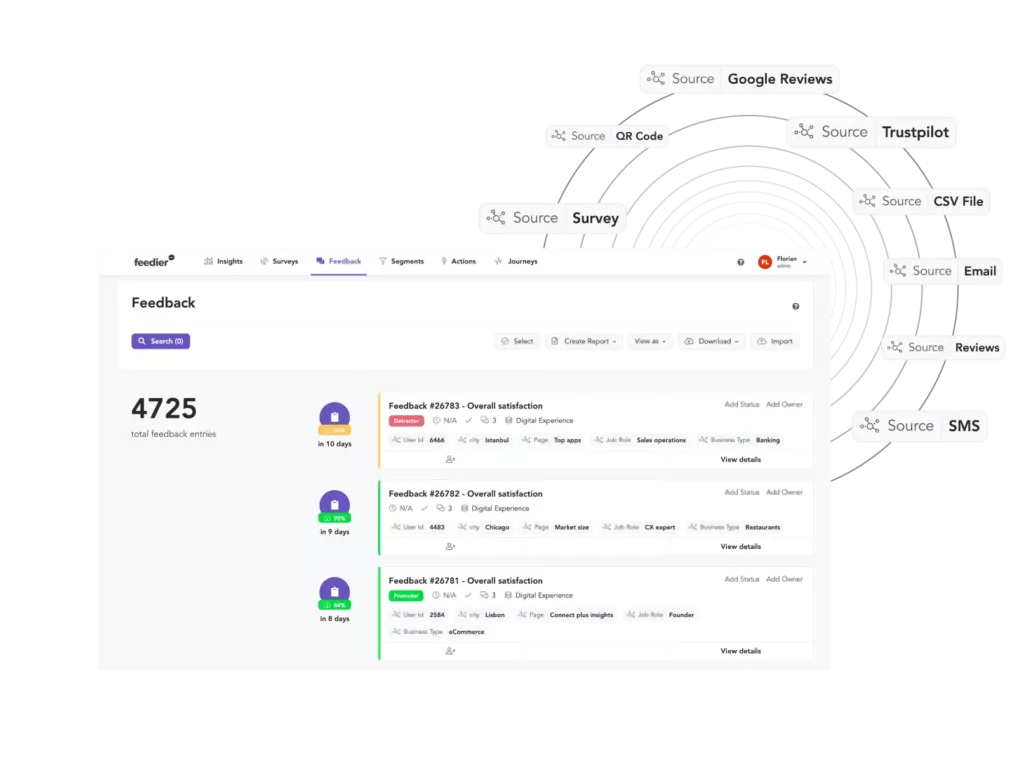Feedback is a critical element for businesses. However, managing feedback can become challenging when it is scattered across various channels and platforms. This is where feedback centralization comes into play. By centralizing feedback, businesses can destroy silos of data, streamline internal processes, enhance efficiency, and improve the overall quality of insights.
In this article, we will explore the challenges with silos of feedback, the benefits of feedback centralization and discuss implementation strategies.
Challenges with silos of feedback
Silos of feedback present significant challenges. Feedback may be fragmented, making it difficult to track and consolidate. Organizations may miss valuable insights or struggle to respond in a timely manner. These decentralized systems hinder the ability to gain a comprehensive and holistic view of feedback, thus customer journeys, limiting the effectiveness of analysis and decision-making.
Understanding feedback centralization
Feedback centralization involves consolidating feedback from various sources into a single, centralized dashboard. This approach provides a unified view, enabling organizations to capture the full spectrum of feedback and customer journeys. By centralizing feedback, businesses can gain a holistic understanding of their strengths, weaknesses, and areas for improvement.
Explore our captivating page on feedback centralization: See how it’s done on Feedier!
Benefits of feedback centralization
Centralizing feedback offers numerous benefits.
- Firstly, it provides clearer visibility by presenting feedback data in a consolidated manner. Trends and patterns become more apparent, enabling organizations to make data-driven decisions.
- Secondly, centralized feedback enhances analysis capabilities, facilitating deeper insights and actionable strategies.
- Thirdly, centralization improves feedback to resolution time, ensuring timely resolutions and fostering customer satisfaction.
- Lastly, it establishes accountability by defining clear processes for handling feedback and ensuring all stakeholders are aligned.
By implementing a feedback centralization strategy, you can save valuable time, enhance credibility, and implement a growth-oriented strategy to propel your business forward.
Implementing a feedback centralization strategy with Feedier
To implement a feedback centralization strategy, start by identifying the relevant feedback sources, such as surveys, reviews (web scraping), and customer support channels.
The next crucial step is selecting the right tools, and one exemplary platform for successful feedback centralization is Feedier.

Feedier offers a comprehensive feedback management solution, enabling businesses to easily import, collect, analyze, and respond to feedback in a centralized manner. With an intuitive dashboard, historical data from platforms like Google Reviews and Trustpilot can be imported, interactive campaigns can be created and shared across multiple touchpoints, resulting in improved response rates and higher-quality feedback.
Feedier also provides powerful analysis and data capabilities, allowing sentiment identification, text analysis, and efficient assignment of issues to the appropriate personnel.
By centralizing all feedback management activities, as well as other customer experience-related tasks, Feedier becomes a unified platform where businesses can derive maximum value from their feedback and overall customer experience initiatives.
Overcoming challenges and concerns
While feedback centralization has significant benefits, there may be concerns about losing individuality and encountering biases in centralized systems. However, platforms like Feedier prioritize data security and GDPR compliance to address these worries. By customizing settings, anonymizing data, and continuously improving, these challenges can be mitigated. It’s important for organizations to stay adaptable and open to feedback for ongoing success. When choosing a feedback and customer experience management platform, businesses should ensure data protection.
Explore the product presentation of Feedier to discover the power of AI-driven customer insights and feedback management.
Conclusion
Feedback centralization revolutionizes the way organizations approach feedback management. By consolidating feedback from multiple sources, businesses can unlock valuable insights, drive improvements, and foster growth.
With the right tools and strategies in place, organizations can harness the power of feedback and achieve new levels of success.



